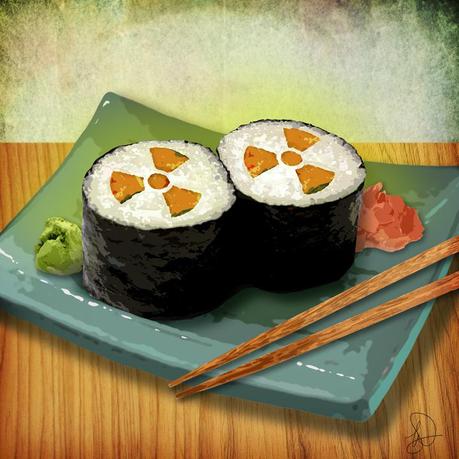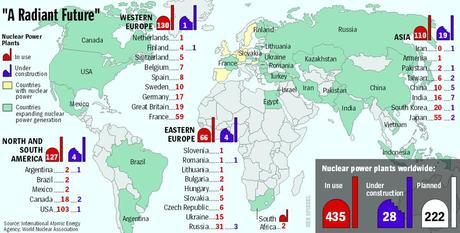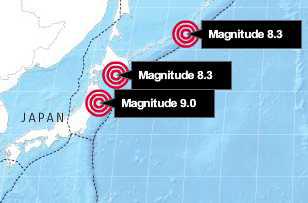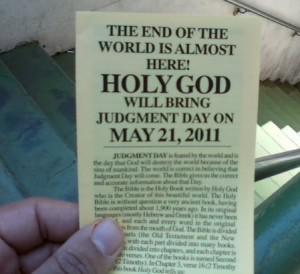 Hey, remember Fukushima?
Hey, remember Fukushima?
Arnie Gundersen is freaking me out! Gundersen is no tin-foil hat guy, he’s the chief engineer of energy consulting company Fairewinds Associates and a former nuclear power industry executive who served as an expert witness in the investigation of the Three Mile Island accident. Gundersen has said that the U.S. nuclear industry and regulators need to reexamine disaster planning and worst-case scenarios, especially in reactors such as Vermont Yankee, which have the same design as the crippled nuclear plant at the center of the 2011 Japanese Fukushima nuclear emergency. Vermont Yankee and similar plants are vulnerable to a similar cascade of events as in Japan.
The Nikkei had fallen down to 8,227 from 10,678 (23%) at the quake and has since recovered 10,017 on May 2nd but was back to 9,648 on Friday (3.6% off the bounce) and the 50 dma has now formed an aptly-named "death cross" below the 200 dma. Japan is already on the hook for $124Bn from the earthquake and will also have to cover TEPCO’s $31Bn (so far) liability as the alternative is let the country’s biggest energy supplier go bankrupt and that would be lights out on their economy.
Warning: Do not watch this video on a full stomach:
This is one of the things holding down the financials as there is no way to know right now, what the real damages are going to be from this ongoing disaster for the insurance companies (and the banks that lend them money). As Gundersen observed on Friday and as is not being reported officially, two other reactors are seriously damaged. A worker at the plant dropped dead on Saturday and Japanese banks and Insurance companies are all suffering with Daiici Life’s net profit down 66% from last year due to the accident.
Accident is a funny word isn’t it? With 435 active plant and 250 more under construction, even if they are 99.9% safe, that would still mean we get an accident like this every year. Hopefully they are 99.99% safe and we only have a major catastrophe every 10 years – wouldn’t that be nice but, so far, that’s not the case as we’ve had about 16 in 50 years with 9 of those considered "major." So accident applies to this situation in the same way that it’s an "accident" if the number you bet on in Roulette comes up on the wheel – it doesn’t USUALLY happen but, if you spin the wheel enough times – it’s GOING to happen and we spin the wheel on 435 power plants 365 days a year – giving them 158,775 opportunities for failure each year.

Residents of Kawamatamachi and Iitatemura, both in Fukushima Prefecture, began evacuating today. About 1,200 residents in Kawamatamachi will evacuate from their homes. In Iitatemura, about 4,500 residents will move from the village to accommodations in Fukushima city, such as housing for local government officials and hot spring hotels. Most of Iitatemura is located more than 30 kilometers from the Fukushima No. 1 power plant. However, the level of radiation detected in the village was as high as that in areas within a 20-kilometer radius of the power plant, which has been designated as a no-entry zone.

Now, initially, the earthquake sent the Dollar down to the lows of the year on nonsense that Japan was going to have to repatriate hundreds of Billions of Dollars to rebuild but, the fact is, Japan is borrowing more money and printing more money and offering more stimulus into a flagging economy – in other words, they are doing what Ben and Timmy have been doing for the past two years so why do people think when they do it, it will have the exact opposite effect?

John H. Burbank III, the chief investment officer of Passport Capital, a $4 billion hedge fund, started things off. “The West is bankrupt and failing, and it’s just a matter of when,” he told the crowd assembled in the hotel’s grand ballroom. Mr. Burbank also took a bit of a shot at asset managers, decrying crowding in the marketplace and how it distorts price. That means when bad things happen and investors move in tandem, there is an element of unpredictability. “Information and stability can change so quickly,” he said. Robert Sinnott, the chief executive of Kayne Anderson Capital Advisors, put it, when the markets seem like “a pond with black swans interbreeding and laughing at us.”
With the end of the World scheduled for Saturday and options expiration on Friday, we’re going to have a very busy week organizing our portfolios. We have our disaster hedges in place so I’m feeling good about that and we expect follow-through selling down to our reference lines (see Stock World Weekly for updated charts), which are still a good 2.5% below where we finished on Friday. A combination of Dollar strength and Yen weakness (coupled with a Nikkei sell-off) should keep things heading down a bit longer although I’m sure there will be some attempt at a market rescue first.
IN PROGRESS

